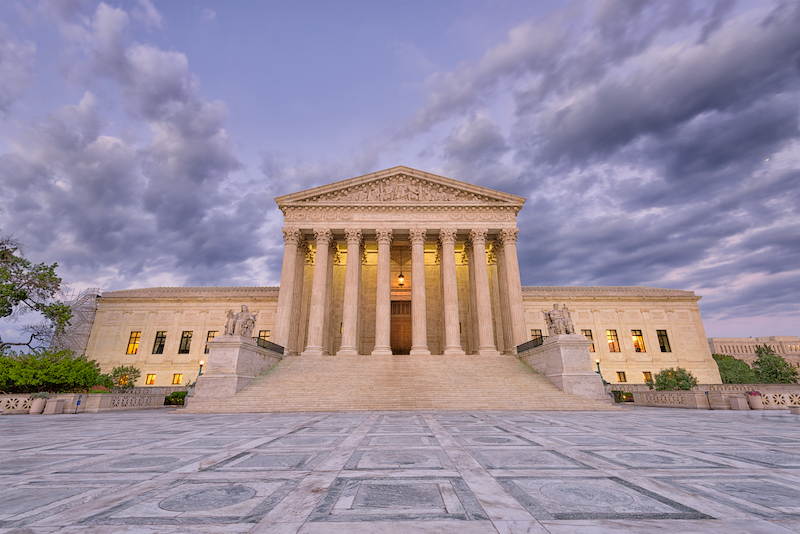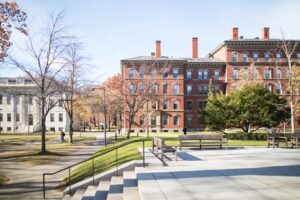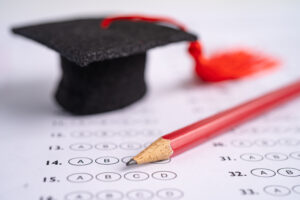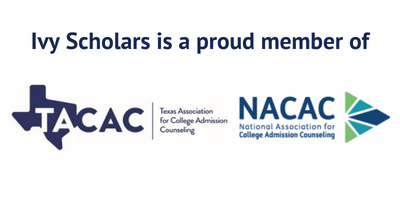The Supreme Court has recently ruled on a pair of related cases, both brought by Students for Fair Admissions, against Harvard University and the University of North Carolina respectively. We’ve discussed these cases before, but as the court’s decision will affect the admissions landscape greatly, we want to take some time to look at what they said, and how it may impact you.
In this article we’ll break down what the Court ruled, and what it means for colleges. We’ll then cover what it means for the students most impacted, both Asian-American and other minorities. It will take time for colleges to respond to this ruling, but we’ll let you know when they do, and how your applications to them may be impacted as well.
Understanding the Supreme Court’s Ruling
The Supreme Court has struck down race-based affirmative action in higher education, holding that Harvard, UNC, and by extension the vast majority of US higher educational institutions violated the Equal Protection clause of the 14th Amendment. The Court’s conservative majority ruled 6-3 in Students for Fair Admissions v. University of North Carolina and 6-2 Students for Fair Admissions v. Harvard College (Justice Katanji Brown Jackson recused herself in the Harvard case on account of working for six years on the Harvard board of overseers).
Writing for the majority, Chief Justice John Roberts wrote: “Because Harvard’s and UNC’s admissions programs lack sufficiently focused and measurable objectives warranting the use of race, unavoidably employ race in a negative manner, involve racial stereotyping, and lack meaningful end points, those admissions programs cannot be reconciled with the guarantees of the Equal Protection Clause…. Many universities have for too long wrongly concluded that the touchstone of an individual’s identity is not challenges bested, skills built, or lessons learned, but the color of their skin.”
With that, Roberts and his five other more conservative colleagues effectively ended race-based affirmative action ahead of the upcoming admissions season. With the exemption of military academies, which were excluded on the grounds that diversity in the nation’s military is so important as to justify the use of affirmative action, the decision did not affect Title IX, nor did the case revolve around gender. Still, many experts are anticipating future rulings and may likely take pre-emptive measures that could hinder gender, disability or other identity-based affirmative action programs.
While this decision was not a surprise, it overturned decades of Supreme Court precedent and upends university admissions processes around the country. In a dissenting opinion, liberal Justice Sotomayor wrote that this decision “stands in the way and rolls back decades of precedent and momentous progress.” Fellow Justices Kagan and Jackson likewise slammed the decision.
The phrase “affirmative action” was first popularized in a statement by John F. Kennedy in March 1961, when JFK issued Executive Order 10925, instructing government contractors to take “affirmative action” to try and assist the disadvantaged, including racial minorities. In 1965, President Lyndon Johnson, in Executive Order 11246, exhorted federal contractors and other institutions to take affirmative action on behalf of women and minorities. Throughout the 1960s and 70s, colleges and universities began to implement admission policies that reflected a priority towards increasing the diversity of their incoming classes.
In 1978, in the case Regents of the University of California vs Baake, the Supreme Court ruled that UC Davis’s use of racial quotas was impermissible, but that admissions could take race into account for the purpose of a more diverse student body. In 2003, in Grutter v. Bollinger, affirmative action was again upheld narrowly, but its death knell was ultimately foreshadowed by conservative Justice Sandra Day O’Connor, who sided with the majority, but wrote, “We expect that 25 years from now, the use of racial preferences will no longer be necessary to further the interest [in student body diversity] approved today.”
A few years ahead of O’Connor’s schedule, higher education admissions are entering a new and uncertain chapter. Advocates for Asian-American students, who were found to have been discriminated against, expressed their satisfaction with the result of this case. Students for Fair Admissions, the victor in both cases, released a statement: “The opinion issued today by the United States Supreme Court marks the beginning of the restoration of the colorblind legal covenant that binds together our multi-racial, multi-ethnic nation.” The group also indicated that it was ready and willing to take up further litigation should colleges try to flout the Supreme Court’s new policy.
Others were less enthusiastic about the ruling. University of Texas professor Stella Flores, in an interview with NPR, expressed, “The research is exceptionally clear, there’s no other alternative method that will racially diversify a student body, other than the use of race as one factor of consideration.” Flores and others see this as a disturbing outcome in a nation that still has far to go in terms of racial equity. President Biden, delivering remarks several hours after the decision was announced, slammed the court’s conservative majority, stating that, “Discrimination still exists in America. Today’s decision has not changed that simple fact.” Other liberals slammed the court for saying nothing about legacy admissions (which tend to be predominately white), while striking down affirmative action. Nevertheless, overall opinion polling tends to suggest that a majority of Americans are in favor of a return to more merit-based admissions.
Still, major questions remain as to what the impact of this decision will be. In his majority opinion, Chief Justice Roberts left the door open to more limited considerations of race by universities, writing “Nothing prohibits universities from considering an applicants discussion of how race affected the applicant’s life, so long as that discussion is concretely tied to a quality of character or unique ability that the particular applicant can bring to the university.” This leaves the possibility open to minority students writing about how they faced adversity due to discrimination or other hardships, and a university or college taking that adversity into account. Indeed, in recent days, UC Davis’s “adversity scores”, which ranks applicants on the disadvantages they have faced, has gained national media attention. Some have proposed that similar systems could be adopted nationwide, although the system could face legal challenges, which might scare off colleges.
Further, Chief Justice Roberts was clear in his opinion that direct proxies for race, or making assumptions based on name or other characteristics would not be allowed. For example, it won’t be enough to merely remove the check box for race, and then make judgments and assumptions based upon that. However, nor are colleges required to always accept the applicant with higher scores or grades. Individual cases of adversity can and should be considered, but it remains to be seen whether adversity scores are too blunt an instrument for colleges to use.
Still, other income-based considerations, could be a key factor considered in maintaining diversity. At present, while Harvard and other Ivies take pride in being able to meet 100% of demonstrated need, their classes remain deeply unbalanced. According to a study from Harvard Professor Raj Chetty, 67% of Harvard students come from the top 20% of the income bracket, while just 4.5% come from the bottom 20%. While Harvard and others may balk at adversity scores, some way to consider the economic disadvantages faced by its applicants will likely be incorporated into their new admissions process.
In a statement sent to students, Harvard announced that it would comply with the Supreme Court’s decision, but that it would not abandon its commitment to diversity. The statement includes a line that reads “Because the teaching, learning, research, and creativity that bring progress and change require debate and disagreement, diversity and difference are essential to academic excellence.” In a personal follow-up message from President-Elect Claudine Gay, she further emphasized, “The Supreme Court’s decision on college and university admissions will change how we pursue the educational benefit of diversity-but our commitment to that work remains steadfast.” Still, the exact way Harvard will attempt to navigate what is sure to be a legal minefield is yet unclear.
Among top-tier American universities, Harvard is far from alone in its dissent. All of the Ivy+ colleges, including Yale, Columbia, and Princeton, were quick to condemn the ruling, while saying they would comply. The one constant throughout every statement, however, is that they don’t articulate the specific changes to their admissions processes. We believe top administrators at many schools have been in deep discussions with lawyers over their options moving forward. Given all this turmoil, colleges may go different ways, based on their own interests, and this year’s admissions process may be highly asymmetrical.
To help, however, we’re going to now break down anticipated changes for different groups of students most impacted by the ruling, and the ruling’s impacts on admissions as a whole.
How does the Affirmative Action ruling impact the Asian community?
Many Asian students and parents are hearing hosts of conflicting things about the impact of the Supreme Court decision. There is some level of uncertainty, especially in how individual universities and colleges may react to that decision. However, surveying the wider world of college admissions, there is hard data that we can look at to predict how this change will affect Asian applicants. In 9 US states, including California and Michigan, race-based affirmative action had already been banned in the public university system. This means that the University of California system and the University of Michigan are great test beds to predict the effects of this ruling.
The Washington Post, using data from Integrated Postsecondary Education Data System (IPEDS) at the National Center for Education Statistics, put together an excellent study of this, which can be found here. In 1998, when a ban race-based affirmative action first took effect, the UC system saw a jump in Asian representation relative to California’s population, particularly at UC Berkeley and UCLA, its most selective colleges. While that representation has come down somewhat, it still remains elevated. California does have a larger Asian population relative to most of the US (around 16% of population in CA vs. about 7% nationally), UC Berkeley’s 2022 fall enrollment was made up of 52.1% Asian students and UCLA’s 2022 fall enrollment was made up of 35% Asian students.
California wasn’t alone in seeing this phenomenon. In Michigan, Florida, and Washington, Asian student representation rose at the most selective schools. As might be expected, less selective schools did see modest declines in Asian representation, perhaps because they were able to attend more selective schools. If college admissions follows the model of the UC system, Asian students could see modest to significant gains at selective private universities. However, this would not mean that Asian applicants suddenly have a much easier time getting into selective colleges; these universities will still be extremely competitive.
Thus far, we have focused mostly on whether there will be an increase in Asian students at top colleges. However, as covered in the next section, this could mean declines in Hispanic and black student representation. This would not necessarily be great for the experience of the students who are able to get in, including Asian students. As many colleges stress, there is huge added value in being able to interact with classmates from all different backgrounds. If major declines in diversity are seen, this would not only impact those marginalized groups, but also harm the experience of everyone at these institutions. However, there remain reasons to believe that the wider admissions world will not look identical to the UC system.
It is not entirely clear that Harvard, Princeton, Stanford, Yale, and other highly selective private universities will be as limited as the University of California system. This decision is vague enough to be interpreted in a number of different ways, and many schools are sure to test those limits in court. While this still represents a major change, the values of these institutions remain, and there is little doubt that these institutions will still prioritize diversity, as they can and should.
Chief Justice Roberts is open to the idea that these colleges can value and take into consideration overcoming adversity. This is usually taken to mean socio-economic status. In the United States, Asian households have the highest income out of any demographic group. From 2015-2019, the American Community Survey found that Asian households have a median household income of $88,204, compared to $68,785 for White households, $51,811 for Hispanic students, and $41,935 for black households. Under this decision, colleges are allowed to, even encouraged to, take into account these hardships in a more robust way.
None of this is inherently bad for the Asian community. After all, as seen through unsealed Harvard and UNC internal admissions discussions, using race as a box to check was often a way for admissions counselors to ignore the individual. Further, as Justice Gorsuch highlights in his concurrence, removing these boxes can reveal distinctions within the Asian community. He makes a compelling argument that lumping South and East Asians together, and all the groups within those broad labels, hurts minorities within the Asian community. The hope is that this decision might lead to a more holistic admissions process that is able to better see and understand individuals, even within large applicant pools.
In summation, the Supreme Court’s ruling can be good for the Asian community, potentially increasing representation, especially for underrepresented Asian groups. However, overriding everything is the sheer uncertainty of it all, and parents and students must remain vigilant and attentive to new college admissions processes.

How will the Affirmative Action Ruling affect minority communities?
Affirmative action was first implemented with the noble desire to help minority communities who had been discriminated against and oppressed get into college, and through college, secure a better future. While the United States has made great strides in many respects, including in combating racism and lifting up the marginalized, it remains clear that there is still work to do. Black and Hispanic household income, and especially wealth, still lags their White and Asian counterparts. Thus, when the Supreme Court’s decision was released, there was considerable concern about what it means for those communities.
In the Washington Post study looking at the states that have banned race-based affirmative action, the selective colleges that saw jumps in White and Asian enrollment saw declines in black and Hispanic enrollment. The worst offender was undoubtedly the University of California system, which saw large declines in their black and Hispanic enrollment at their most selective schools. Immediately following the ban, UC Berkeley saw a decline of 50% in black enrollment. While this number has recovered somewhat, just 2.8% of UC Berkeley’s 2022 fall enrollment was black students. This is far below similar colleges and Ivy League averages.
To be clear, in the University of California system overall representation is higher. Over 5% of the UC system enrollment is made up of black students. Still, this would seem to be quite the bleak outlook if UC Berkeley’s example was extended to the rest of the wider university admissions world. Fortunately, there is reason to be more cautiously optimistic.
The Supreme Court’s decision is narrow enough that universities will be able to pursue diversity through alternative means. While the decision prohibits universities from assuming that a student would contribute to the diversity of the college simply because of their race, financial hardships, family difficulties, and racial discrimination are all still valid experiences that can be used to show how an individual can add value to the class. For example, black applicants can still point to their lived experience dealing with racial discrimination, and colleges often see that as valuable. Indeed, socio-economic affirmative action is still very much on the table, even more so than before. Given Professor’s Chetty’s examination of Harvard’s financial makeup referenced above, it is clear that these universities still have much work to do in that department.
Furthermore, some legal experts have suggested that UNC and Harvard represent the extremes of a quota system hiding behind other names. On the Advisory Opinions podcast, host Sarah Isgur suggested that many existing admissions regimes might not actually violate the new standard set. Indeed, Grutter and Baake are not overturned by the majority, cases which did still hold up affirmative action. Still, this decision undoubtedly makes it harder for black and Hispanic applicants.
For minority applicants who have faced specific and serious adversity, it is going to be important to highlight this through essays, recommendation letters, and interviews. In many ways, this pressure is deeply unfair as it can hurt students who don’t wish to talk about their experience. We’ve discussed issues with trauma essays before, but they may become an integral part of some student’s applications.
For students and parents alike, this is sure to do little to assuage fear completely as application seasons approaches with a cloud of uncertainty hanging over it. Ivy Scholars is committed to tackling uncertainty as our mentors work to understand the new state of affairs and help students maximize their chances of success significantly. Amidst the uncertainty, perfecting the areas of the application that you can control becomes ever more salient, and Ivy Scholars remains deeply committed to doing so for every student we have the privilege of working with.
How the Supreme Court’s Ruling Impacts College Admissions
As soon as the Supreme Court decision was handed down, college admissions offices around the country scrambled into action to examine and overhaul their admissions process in light of the decision. Since the case has been looming for several years, many colleges began making plans well in advance, though these of course had to wait to see the full scope of the ruling. Now, they must put new guidelines into place ahead of this upcoming admissions section, as this decision is effective immediately.
While it is hard to predict what any specific college will do, on the whole it is reasonable to expect that universities will take the opportunity to overhaul their supplemental essay prompts and interview questions to gain access to information they no longer can through checkboxes.
In terms of the Common App, you may or may not be asked for your racial and ethnic information anymore, though colleges will be forbidden from considering it if you answer. Instead, colleges are supposed to view your own experience rather than viewing you as a representative of your class. However, in practice, we expect colleges to seek proxies to maintain diversity, whether through household income, the high school you attend, or what zip code you live in. These proxies will unfortunately not be under your control, making the rest of your application more important.
As college admissions officers seek the best ways to consider adversity, they may introduce specific essay questions on the Common App asking “how might you contribute to diversity on campus?” or “tell me about a time when you overcame adversity?”. These specific questions will be important areas for disadvantaged students to articulate their struggles to this point, and how their experiences will be an asset to the college that takes them.
Over the next few months, the picture will become clearer as universities finalize their new applications and processes. We will keep you updated with more articles about the evolving situation, updating you on what each college wants to see. We work tirelessly to not merely rely on our experience, but always stay connected with any developments in the world of college admissions.
Looking Ahead: The Gender Gap
As we have mentioned in a previous article, gender is considered in college admissions, and has a much higher impact on your chances of acceptance than race. Although this ruling did not touch upon Title IX, we anticipate this to be the next source of challenge, since the same reasoning the court used here applies to gender as well. While no case currently exists which would bring this before the court, we anticipate it occurring before long.
Final Thoughts
The Supreme Court has forever changed the college admissions landscape. We will not know the full impact of their decision for some time, but we will post further articles updating you on the admissions landscape as colleges make their plans known, or release updates on how they will handle your applications.
If you are looking for help writing your essays, or understanding what admissions officers are looking for in an application, schedule a free consultation today to learn how we can help you. We have a breadth and depth of experience in all aspects of the admissions process, and are always happy to hear from you.








